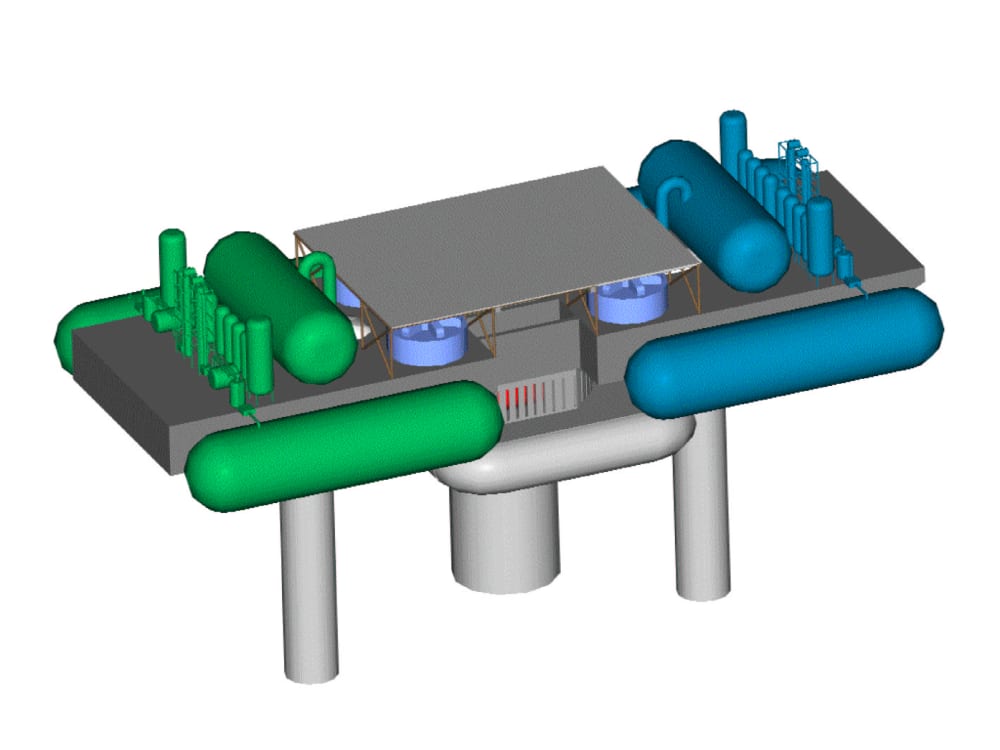Oceanic Thermal Energy Conversion system for Gulf Restoration Venture (OTEC-Gulf) is being created in this two-phase effort. In Phase I, we will conduct extensive, long-term testing of concepts over a two-year period in a one-tenth-scale prototype. In Phase II, deploy 100’s of 100-megawatt OTEC systems.
OTEC-Gulf will bring nutrient-rich cold water from the Gulf of Mexico depths causing a phytoplankton bloom, which will restore oxygen & aquatic life at surface AND over time sequester carbon to ocean depths. OTEC systems also remove warm water from ocean surface thereby reducing hurricane fuel source, which could reduce risk to properties at nearby beach communities. Income from OTEC system could be generated via:
1. BP and Gulf restoration,
2. carbon credit sales,
3. electricity sales, &
4. insurance credits for hurricane protection sales.
Proposed system is unique in that it utilizes a hydraulically powered pump at the lower end of cold-water tube and then uses the cold-water pressure at the surface to entail warm water and for steering.
According to our calculations, each 100MW OTEC-Gulf system will require 4,000CFS of both cold and surface water and will balance the solar insulation level for only two square miles on June 21st and December 21st, 3.8 square miles, in doing so, it will deprive hurricanes of their fuel.
One company is involved in spreading iron particles onto the ocean surface from a ship for the sole purpose of creating a phytoplankton bloom by iron seeding. It is thought that as the plankton dies, it will take carbon to the ocean bottoms and remove it from the air and ocean. The problem is dumping of iron is thought to violate anti-ocean dumping treaties by many countries. Since OTEC-Gulf merely moves water to the surface, no anti-ocean treaties will be violated and the enormous amount of water moved from the ocean depths will bring many times more nutrients (not just iron) to the surface.
It is OTEC-Gulf’s plan to initially attach a 100MW power system to each of the 3,600 oil platforms just off the Louisiana coast; the Deepwater Horizon required 42MW of electrical power for its operations. Excess electricity can be sent to shore via a high voltage DC electric line. Such a line would be far less than the 360-mile, 700MW HVDC line between The Netherlands and Norway, (Project NorNed), costing 550M euros in 2008. By attaching to an oil platform, an ocean anchor is unnecessary and much of the electrical power can be directly sold to the oil platform.
Research to date has centered around the potential to generate electricity from the OTEC system. In Phase I, we will observe:
1. If correct phytoplankton is cultivated;
2. How much phytoplankton turns into sequestered carbon;
3. How does the marine life quantity change;
4. How quickly the warm heat exchanger fouls as a result of the increased marine life;
5. How large of surface area is cooled;
6. How does the phytoplankton effect the oxygen levels; and
7. How autonomous and durable is the system.
Like this entry?
-
About the Entrant
- Name:Douglas Thorpe
- Type of entry:individual
- Software used for this entry:AutoCAD AutoSolids
- Patent status:none





